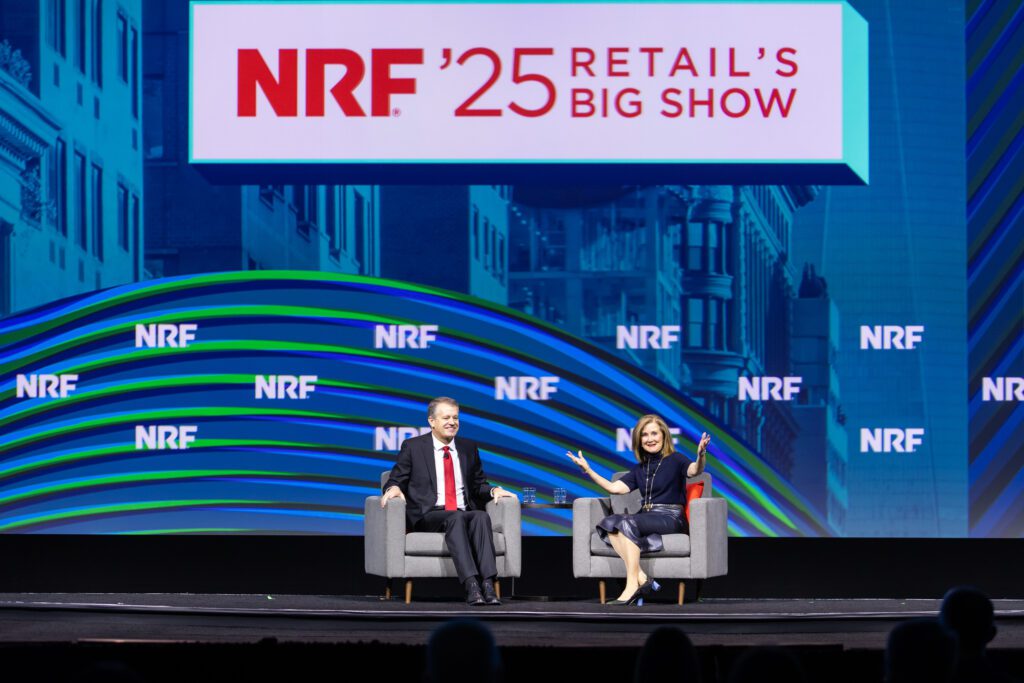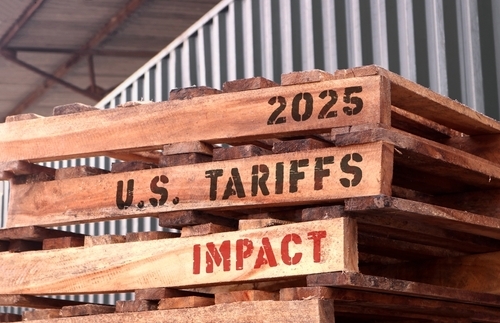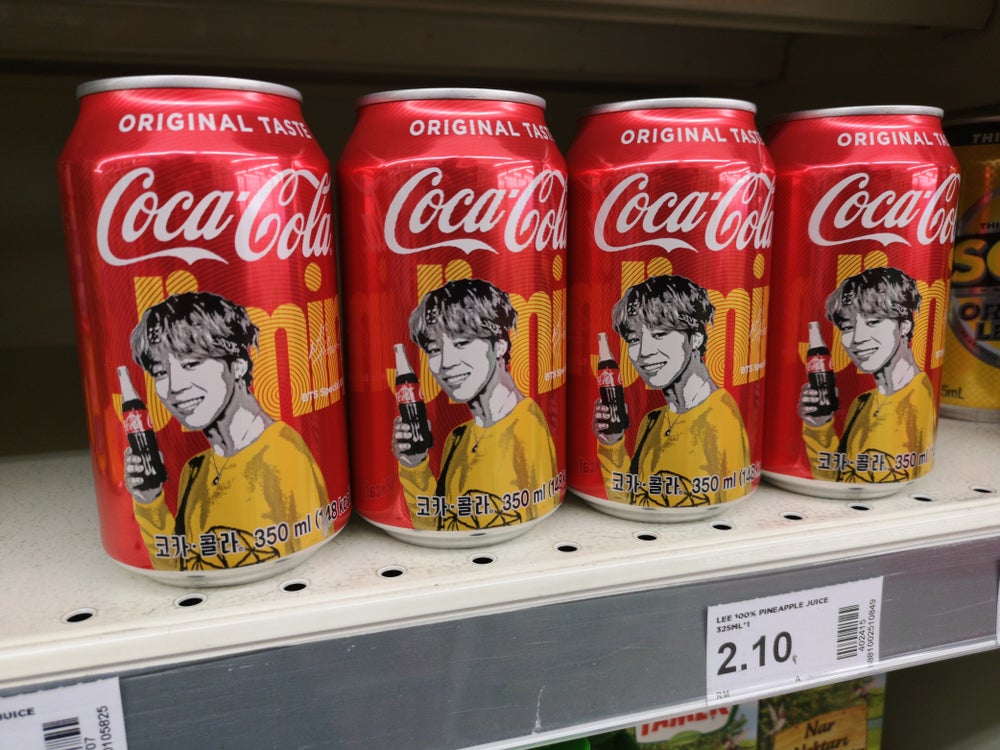Nearly 40,0000 people attended The National Retail Federation’s annual conference NRF ’25 in New York City in January. The Big Show included 6,200 brands, 1,000 exhibitors, 450 speakers and 400 media/analysts.
I attended; I listened; I learned. Now I’m back with six key takeaways from the conference:
1. If you haven’t invested in A.I. yet, you need to start.
Artificial intelligence was all over the NRF agenda, in the presentations and on the minds of most attendees. For the past year, marketers have tested generative artificial intelligence and incorporated the technology into employee-facing tools and customer-facing experiences. At the show, they talked about the results from these deployments and how they will continue to invest in artificial intelligence.
“AI is becoming transformative for our business and we really haven’t had a technology revolution as large as this since the start of the Internet,” said Doug Herrington, CEO of worldwide Amazon stores.
Herrington touched on a handful of ways Amazon has implemented generative AI, such as AI summary, which displays a summary of all customer reviews. In July 2024, it launched conversational shopping assistant Rufus which uses product details and reviews to answer questions. Shoppers have asked about 500 million questions to Rufus in its six-month life, he said.
“About half of our customer service interactions now are getting touched by generative AI in some form or another, and it’s still higher quality responses with higher customer satisfaction,” Herrington said.
Amazon also is implementing AI in writing product titles, providing apparel fit recommendations, in its robotic arms, among other uses. And it is just getting started.
Azita Martin, vice president and general manager, retail and CPG at computer manufacturing corporation Nvidia, spoke of many ways merchants are using generative artificial intelligence, such as in warehouse planning, inventory forecasting and personalization. She encouraged all retailers that haven’t invested in AI to start by looking at some of their biggest business challenges and assigning teams to discover how AI could solve those issues.
The AI revolution is only going to grow and employees need to have the skills to use it, Martin said.
Generative AI won’t take your job, “but someone using generative AI, may take your job,” Martin said. “So embrace it. It’s a tool that just makes you more productive and it’s going to make you so much smarter.”
2. The store experience needs to be special
While retailers are infusing artificial intelligence into their tech stack, many retailers at NRF emphasized how important the store still is to retail and the need to invest in it. Because shoppers can largely get whatever they need online, if they physically come into a store, merchants have to make it worthwhile for them.
“You have to make it an experience that people want to have,” said Mary Dillon, president and CEO of Foot Locker Inc. in her keynote presentation.
Footlocker is refreshing and modernizing its stores, which includes emphasizing sneaker culture and its store associates. The refreshed stores have an area at the front of the store called the “Drop Zone,” which showcases a hot product, a “fun” area in the center of the store where shoppers try on shoes, plus a basketball section and expanded women’s selection. By the end of 2024, about 67% of its global store feel will be refreshed, she said.
Dylan Lauren founder and CEO of Dylan’s Candy Bar, also emphasized that stores need to be fun, where shoppers feel good and happy. Dylan’s Candy Bar features artistic displays of candies and gifts, with candy-themed music playing to help “bring out the inner child” in everyone, Lauren said.
Luxury brand Coach also is buying into “retailtainment,” to give shoppers more than “bags on a shelf,” said Giovanni Zaccariello, vice president of global visual experience at Coach. The brand has launched several experiential and hospitality-type stores with coffee shops and restaurants to attract more shoppers to stores. So far, it’s working to bring more shoppers into the store, stay there and come back again, he said.
“Dwell time in these location is four to five times higher than an average location,” Zaccariello said.
3. Employees, including store associates, are vital
And a large part of that store investment is in the employees.
Women’s apparel and home goods brand Anthropologie knows this to be true. The retailer’s window displays are a prime example of how valuable its employees are, said Elizabeth Preis, global chief marketing officer at Anthropologie Group. Its window displays are “amazingly created” by its employees and drive shoppers into the store and drive online engagement, Preis said.
“The best performing content on Instagram is our windows. It’s not about a product, it’s not about the nuance, it’s the power of the windows,” Preis said. “It’s because that is truly the gateway to help people experience the brand.

“The other thing that we try to do is that we also celebrate the people behind the windows. We celebrate the creators of those windows because creativity is super, super important to us.”
Target Corp. CEO Brian Cornell also discussed the importance of investing in employees as one the building blocks of its success.
“That investment in talent and connecting that to culture, it’s just so important,” Cornell said. “When I think about culture, it brings me back to the importance of talent development and how that drives performance for our company.”
Another way retailers can tap into their employees for success is via service provider Vanish Standard, which I discovered on the show floor. Japan-based Vanish Standard has a platform called Staff Start that allows a retailer’s employees to become brand ambassadors. About 3,000 brands use its platform and allow retail employees to create and post content about the brand. Vanish Standard markets itself as a win-win, as employees already know and are trained about the brand, and it’s a way for the company to invest in them.
4. Retail Media Networks have a long runway of revenue potential for retailers and brands
Surprisingly the NRF ‘25 agenda was not chock full of retail media network content. The lion’s share of that content was in a day-long workshop on the Saturday before the conference started. (Rumors are that it was a worthwhile special program.)
For the main show, it hosted a few sessions including an excellent presentation with executives from eMarketer, Target and Nordstrom.
EMarketer estimates that marketers spent $9.19 billion in non-website retail media networks spots in the U.S. The research firm estimates that this will grow 45% in 2025 to $13.06 billion.
“Advertisers are already quite comfortable using your data and using your infrastructure to target people,” said Max Willens, senior analyst, ads and media at eMarketer.
One such brand is value retail chain Dollar General, which launched its retail media network in 2018. In line with eMarketer’s forecast of off-line growth, in-store and audio advertising are popular choices right now for brand advertisers, said Charlene Charles, head of DG Media Network Operations at Dollar General.
But overall, most of the hundreds of brands that advertise on its retail media network are typically looking to talk to shoppers across many channels for a full-funnel approach to advertising to lead to a conversion, Charles said.
“I would argue more that with the cookie crumbling and targeting moving from third party to first party data, when I spend a dollar, I want to know how effective it is. So a lot of budgets have shifted in the direction of retail media because it’s measured,” Charles said. “Everyone’s trying to have dollars work harder for them. And smarter. And putting those dollars in different places.”
5. We’re not your mom’s brand
In several sessions and during interviews I had at the show, brands shared challenges of making their products appeal to a younger shopper. They didn’t want to be known as “their mom’s brand.”
I get it. But as a mom I take mild offense at having my role being synonymous with old and uncool. But I digress. Simply: Brands want Gen Z shoppers.
The first time I attended NRF, I remember hearing the survey results about Gen Z’s shopping habits and learning what was important to these high-school aged consumers. (In-person experiences, authenticity and sustainability, to name a few.) It has not taken long for the Gen Zers to come onto the scene with strong spending power.
And retailers need to determine how to make their brand relevant to these shoppers.

Coach, for example, said it created a digital version of its Tabby bag for the metaverse so younger shoppers can interact with its products there, Zaccariello said. Coach had a test-and-learn agenda on the Roblox and Zepato platforms that was incredibly successful, he said.
“Millions of kids around the world are now wearing the Coach bag on Zepato,” Zaccariello said.
They are not buying the product now, but one day, they might, he said. “Now they know what Tabby is. Now they know what Coach is. So we started that conversation with them,” Zaccariello said.
6. In today’s landscape, be ready for anything
Tariffs are immanent. Wildfires are raging. One of the most popular social media platforms is banned. The COVID-19 pandemic that changed our world was five years ago. But retailers today need to be just as nimble as they were during COVID times.
For marketers, that means diversifying ad dollars, strategizing contingent plans and being flexible.
Buckle up. Let’s see what 2025 will bring!




